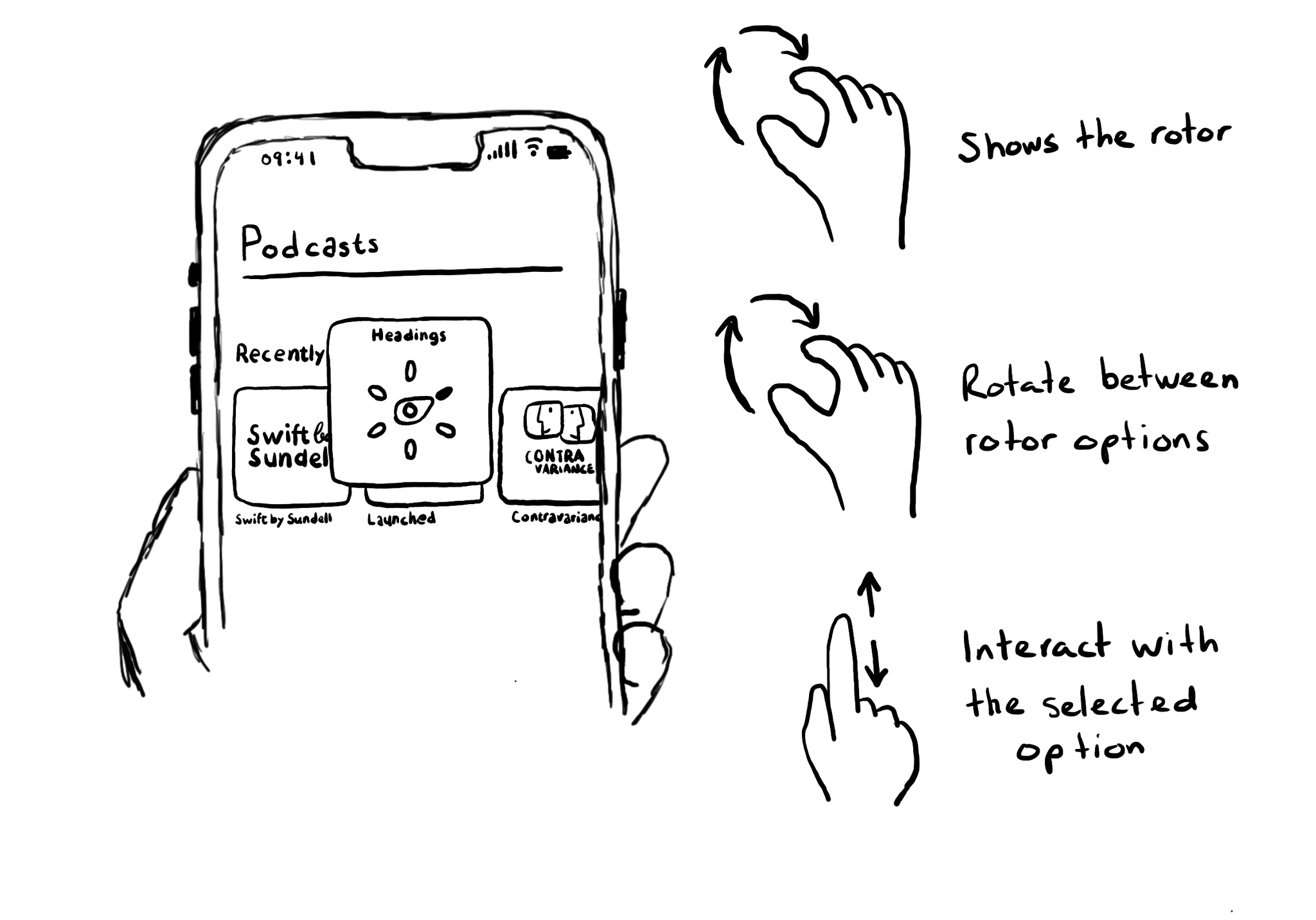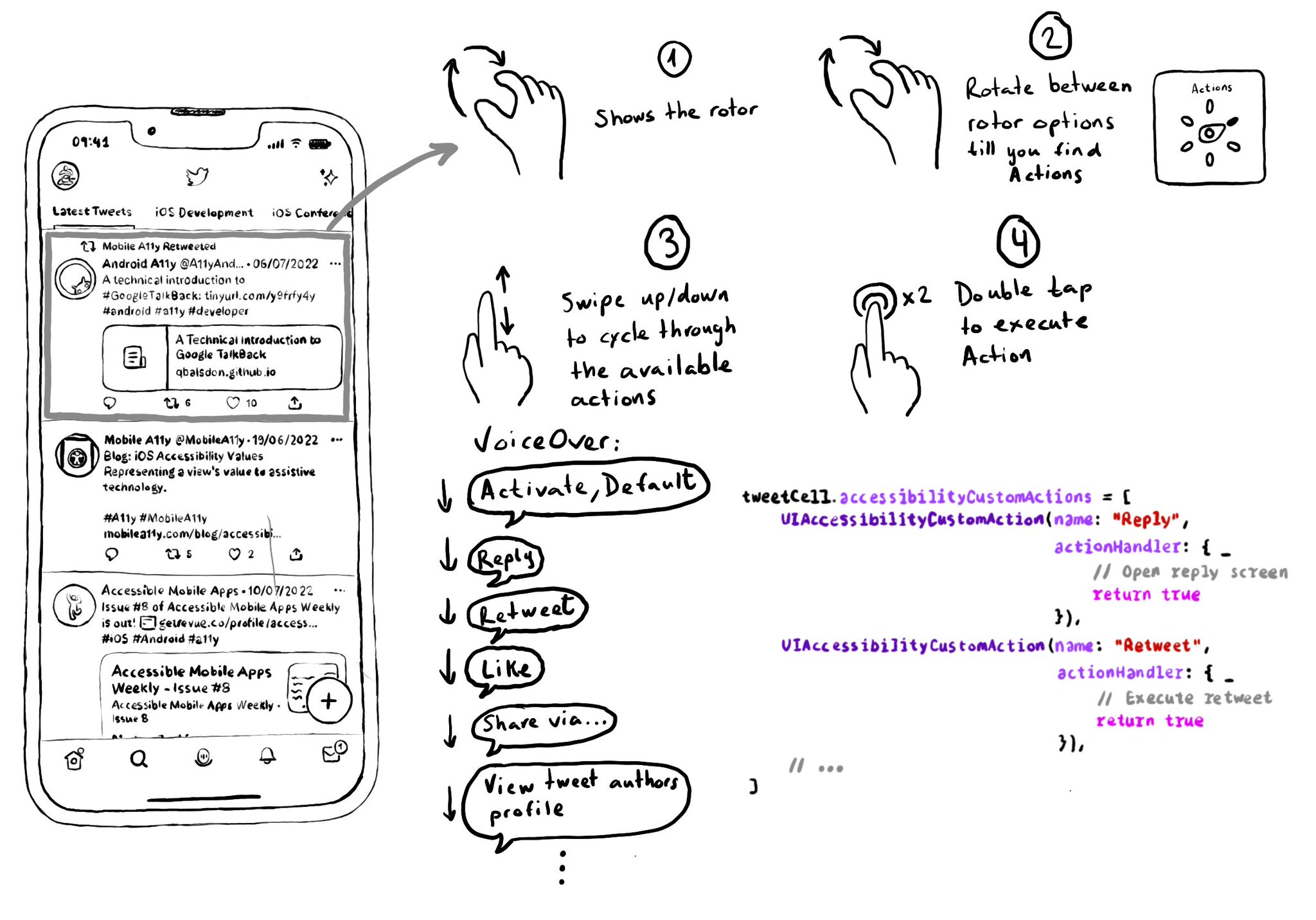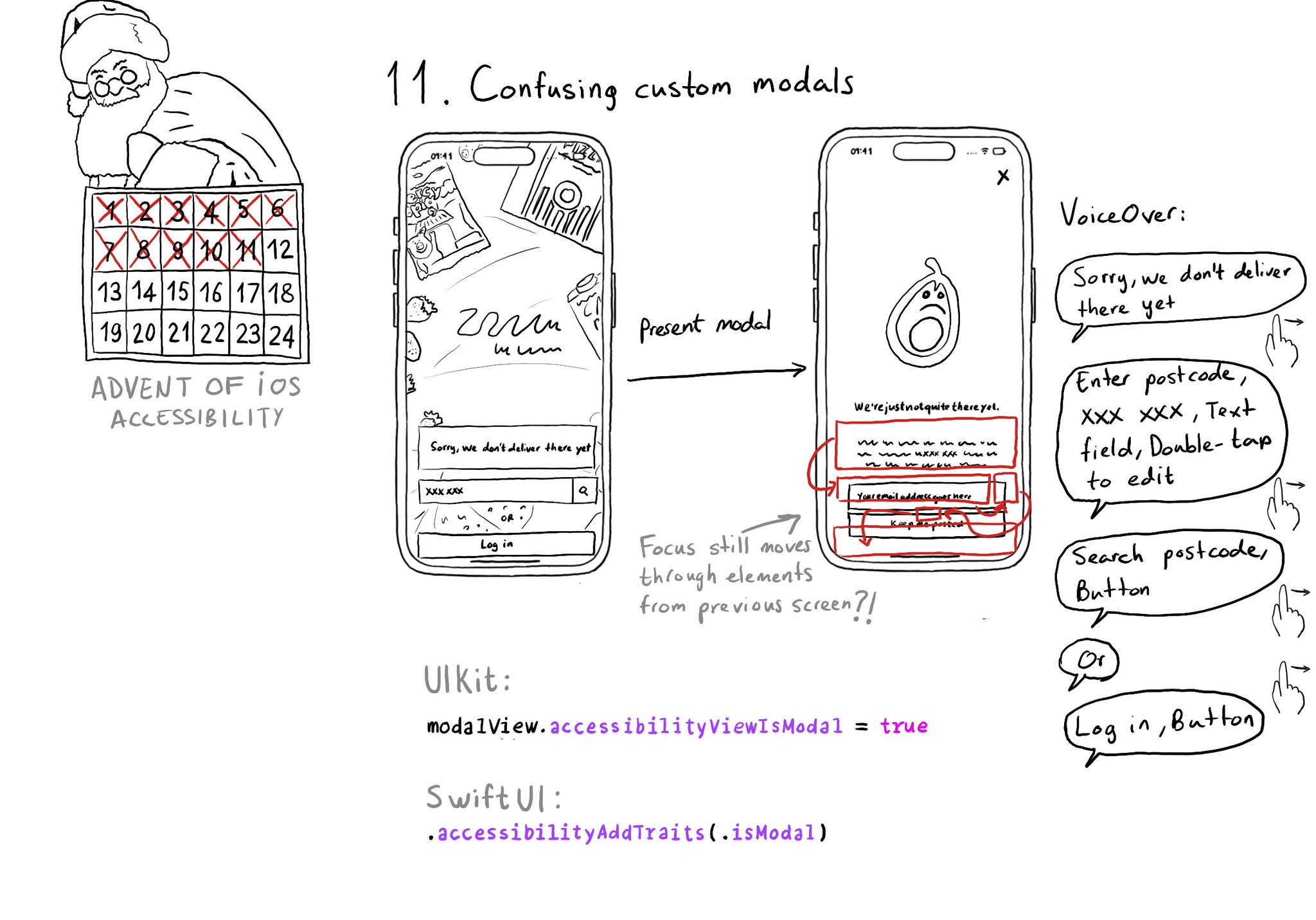Meet the rotor. A menu that you activate (and change options) by rotating two fingers on the screen. It lets you select different navigation modes and customizations. Like navigating through headings or changing VoiceOver’s speaking rate.

You may also find interesting...

Optimising for navigation by making a view accessible shouldn’t come at the expense of the buttons in it not being accessible. Configuring custom actions will allow the user to access them using the Actions rotor. With the Actions rotor, users can swipe up and down to cycle through all the options, stop at the desired one, and double tap to execute that action. You can configure an array of custom actions. Custom actions can have a name that will be announced by VoiceOver and an action handler or target selector with the code that will be executed. https://developer.apple.com/documentation/objectivec/nsobject-swift.class/accessibilitycustomactions

Have you ever seen VoiceOver randomly focusing on elements of the previous view when presenting a custom modal view? That can be fixed by letting the system know that the presented view is modal in terms of accessibility.
Guidelines from Apple: Begin with a verb that explains the results of the action. Avoid using the imperative form of a verb because that can make it sound like a command. Don’t include the action type. Don’t include the control. https://developer.apple.com/documentation/objectivec/nsobject-swift.class/accessibilityhint